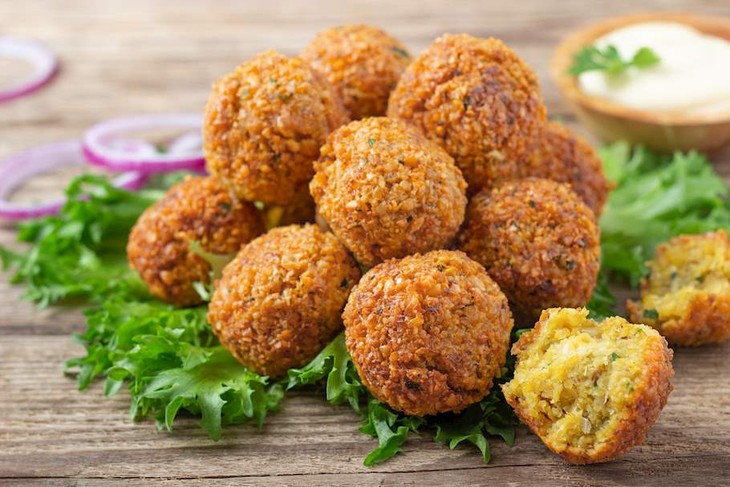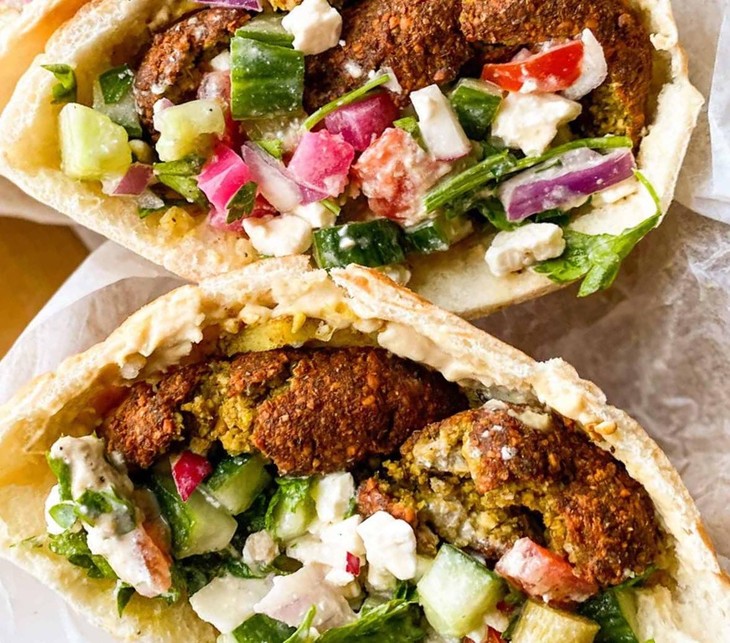(VOVWORLD) - Israel’s cuisine is classified as the cuisine of immigrants, and there is a variety of Israeli food available in this country, said Professor Nir Avieli, a cultural anthropologist at Ben Gurion University of the Negev in Israel. Falafel is one of Israel’s popular dishes. Every Israeli has an opinion about falafel, the ultimate Israeli food, which is most often served stuffed into pita bread. This week, Professor Nir Avieli was back on VOV’s Cultural Rendezvous to tell us about Israeli falafel.
 Israeli falafel (Photo: tasteatlas.com) Israeli falafel (Photo: tasteatlas.com)
|
Bao Tram: Welcome back to VOV’s Cultural Rendezvous, Professor Nir Avieli! In our previous program, you gave us an overview of Israeli cuisine. You said Israeli cuisine is the cuisine of immigrants, meaning that Israeli cuisine is diverse. So what dish is the most popular among them?
Nir Avieli: I think that the most popular food in Israel is hummus but it is true that there is a variety of food here and preferences change all the time. So it's not only one favorite. Like fashion, it comes and goes, especially as a result of globalization. Falafel is another example. We like it. My children, if you tell them, let’s go to eat falafel, anytime they will say yes.
Bao Tram: Tell us more details about falafel? What is it?
Nir Avieli: Falafel is made from chickpeas. As a meal it can be prepared as a falafel sandwich made of pita bread and containing salad, vegetables, and sometimes cabbage and pickles added to a hummus spread and tahini or sesame paste. You then mix with lemon, salt, garlic and water. So it acts as a base for the falafel. The falafel itself is a ball-shaped. To prepare the falafel, you soak chickpeas in water for many hours and then grind them and mix inside “rau thơm” and maybe old bread. And then you roll the mix into balls and deep fry them, then add them to the pita. When you take a bite, some things are dry, some things are wet, some things are soft, some things are crunchy, some things are hot, some are liquid, and some are more solid. You will have a very interesting bite because there are many flavors at the same moment. It’s vegan and it's relatively cheap, between 5 and 8 USD. One falafel sandwich like this is a lunch.
Bao Tram: As you describe, falafel is quite delicious, especially the stuffing and the sauce, at least in my imagination. But this makes me a bit worried about the way to serve it. What things should I pay attention to?
Nir Avieli: Most people simply stand in the street, you holding the pita in your hand with a napkin, and it always drops on your clothes because it has the sauce and the sauce always makes you dirty! So one very important thing about falafel is that never eat falafel on a blind date! Never on a blind date! If you want to meet a girl or a boy in the first meeting, never eat falafel because it makes you look very, very unsexy. Often in falafel, they also put the pickles and there are some veggies. They put them on the outside, so you can take and eat separately. You eat with your hands. It's a very popular.
 Falafel is stuffed in pita bread with chopped tomatoes, onion, and green pepper, altogether drizzled with tahini. (Photo: Minh Hien) Falafel is stuffed in pita bread with chopped tomatoes, onion, and green pepper, altogether drizzled with tahini. (Photo: Minh Hien)
|
Bao Tram: It’s obvious that there are quite lots of things placed inside a falafel. It also requires many steps to make the dish. So do you think I can make it at home?
Nir Avieli: No, buy it outside! Don't make it at home! Don't try to do it at home. It's actually not very complicated. To be honest, it's not the most complicated meal in the world but it takes a lot of talent. I think maybe for Vietnamese, you may like to do it.
Bao Tram: You said at the beginning that your children are always ready to go to eat falafel at anytime. Why is it so popular?
Nir Avieli: That's an interesting question. First of all, let's be clear about this. It’s the Palestinian dish, not only Arab but specifically Palestinian. It belongs to the cuisine that was called Shami cuisine, which originated in Syria, Lebanon, Palestine, and northern Jordan. This is a classic specialty of this area because Egypt also has falafel but they make it from different “đậu xanh” (green beans) instead of “đậu ván” (fava beans). So when the Jews came to Israel, they wanted to feel that they belonged here. They wanted to reconnect because nearly 2000 years ago they left the region. Some of them were in Poland, some of them were in Russia, some of them were in Iraq, but not here. So they wanted to reconnect and they felt that falafel is one way of reconnecting. It’s like if I immigrated to Vietnam and I say okay from now on I eat every day “Phở” or “Mỳ Quảng” or “Bún” and I feel that I am a local. So this falafel is specifically very local.
Bao Tram: Thank you, Professor Nir Avieli, for joining us today to talk about Israeli falafel.
Nir Avieli: “Hẹn gặp lại nhé” – See you soon, bye bye!
Professor Nir Avieli is a cultural anthropologist at the Department of Sociology and Anthropology, Ben Gurion University, Israel. He is mainly interested in the anthropology of food and in the anthropology of tourism.
He has been conducting ethnographic research in the central Vietnamese town of Hoi An since 1998. His book “Rice Talks: Food and Community in a Vietnamese Town” published in 2012 is a culinary ethnography of Hoi An.
Nir conducted ethnographic research also in Thailand, India, Singapore and Israel.
He completed a book manuscript titled: "Food and Power: A Culinary Ethnography of Israel" .
He is now doing a new research in Greece about free time, leisure time.